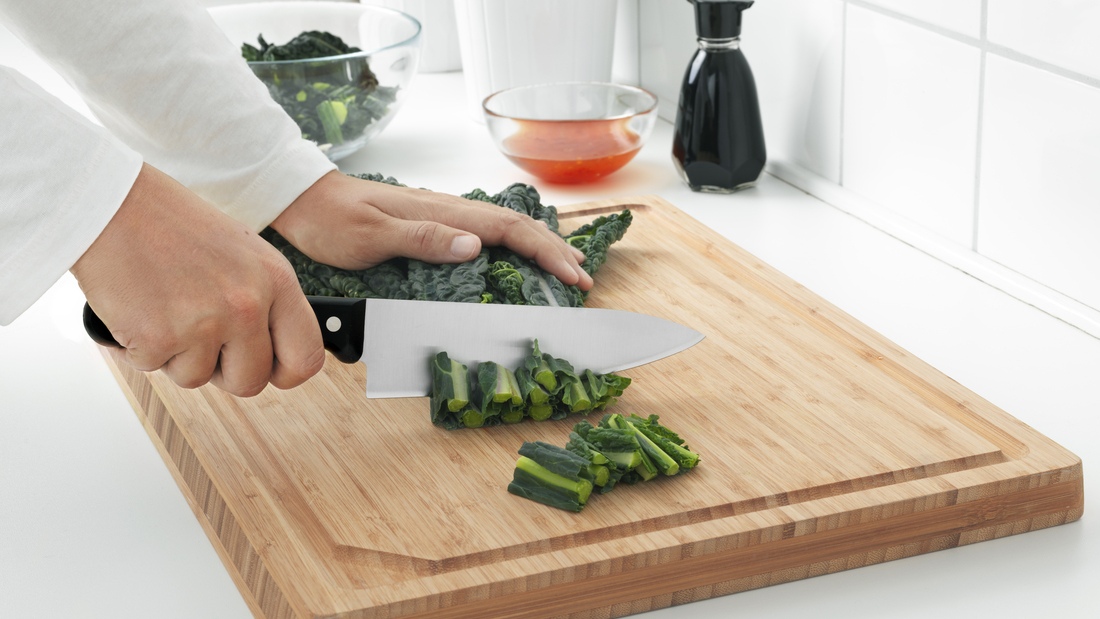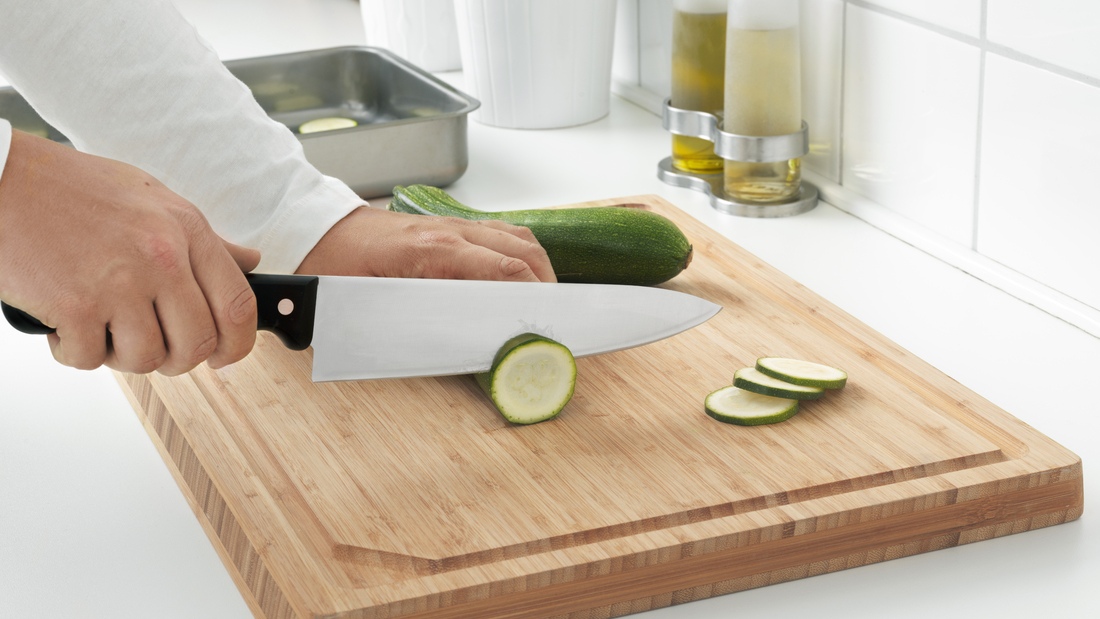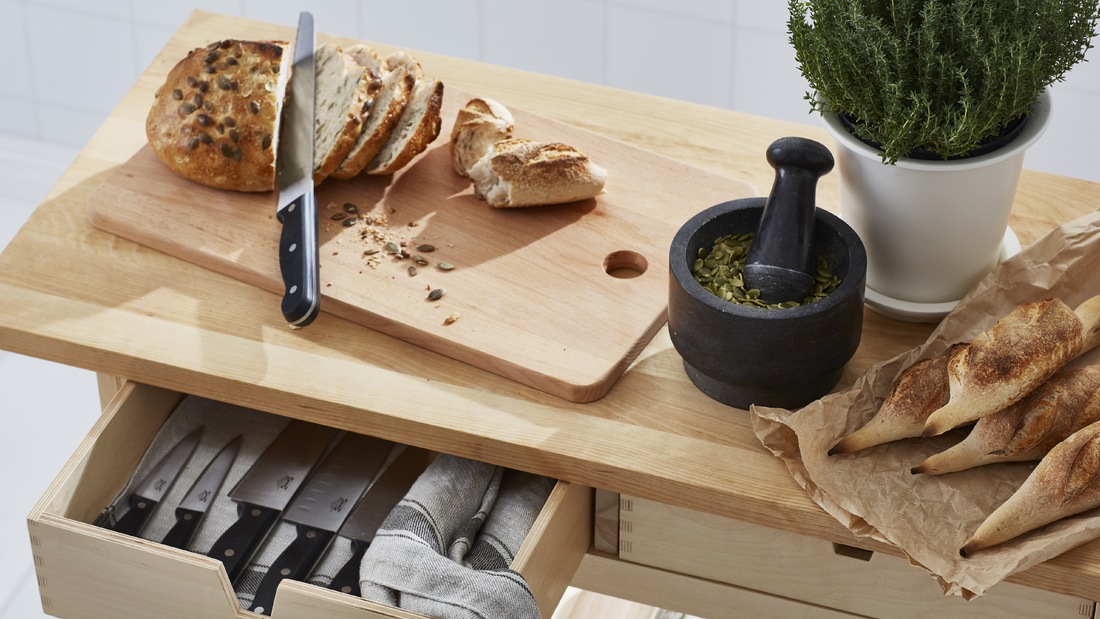How to choose the right kitchen knife and its functions for cooking



A kitchen knife is one of the essential tools that determine comfort and efficiency in cooking. By choosing the right type of knife, you can enjoy an easier, faster, and safer cooking process.
On the other hand, using an unsuitable knife can hinder your work, increase the risk of injury, and affect the final result of your dish.
This article will help you understand the different types of kitchen knives and how to choose the most suitable one for your daily cooking needs. Let's dive into the details below!
A kitchen knife is not just an ordinary cutting tool. Each type of knife has a specific function that enhances comfort and efficiency in cooking.
Read on to learn about the role of knives in cooking and the risks that may arise from using an inappropriate knife.
A kitchen knife is the primary tool in food preparation. Using the right knife makes the cutting process easier, faster, and more efficient. With the correct knife, you can:
Cut ingredients with greater precision
Save time in meal preparation
Reduce the effort needed to cut tough ingredients
Maintain the texture and quality of food ingredients
Ensure food stays fresh and neatly shaped
Read also: Inspiration for a kitchen with a minimalist modern interior
Conversely, using the wrong knife can lead to several problems, such as:
Difficulty in cutting ingredients with precision
Increased risk of injury from using a dull or improper knife
Less optimal dish results due to uneven or crushed cuts
Longer preparation time due to extra effort required to cut ingredients
Risk of contamination as improperly cut food may stick to the knife
A dull blade making cutting harder and more dangerous
There are various types of kitchen knives designed for different cooking needs. Some are versatile, while others serve specific purposes. Here are some essential kitchen knives you should know about.
Versatile knives can be used for multiple cooking tasks. These include:
Chef’s Knife: The primary kitchen knife suitable for cutting various ingredients such as meat, vegetables, and spices. Its ideal blade size allows for various cutting techniques, from chopping to slicing meat.
Santoku Knife: A traditional Japanese knife similar to a chef’s knife but lighter and wider with a more rounded tip. It is designed for precise cutting and is commonly used for slicing vegetables, fish, and meat.
Utility Knife: A small, versatile knife measuring between 10 to 15 cm, perfect for cutting small to medium-sized ingredients like fruits, vegetables, and boneless meat. Its small size makes it easier to control for more detailed carving.
Apart from versatile knives, some knives are designed for particular kitchen tasks:
Paring Knife: A small knife with a sharp 7–10 cm blade ideal for delicate tasks such as peeling, slicing, and cutting small ingredients like fruits and vegetables. Its slim shape allows for better control when handling small items, such as slicing strawberries or peeling apples with precision.
Boning Knife: A long, flexible blade designed to separate meat from bones with precision. Its slender and slightly curved blade makes cutting around joints and bones easier without damaging the meat’s texture.
Cleaver Knife: A heavy knife with a thick blade used for cutting meat and small bones. With its larger weight, this knife can easily split tough ingredients such as chicken bones, ribs, or even hard vegetables like squash.
Bread Knife: A serrated knife with a long blade (20–25 cm) specifically designed for cutting bread and cakes without crushing their texture. Serrated bread knives allow for smoother slicing without damaging the soft interior of bread.
To ensure you select the appropriate knife, here are some tips to follow:
If you frequently cook meat, a boning knife and cleaver knife are essential for the best results. Make sure to choose a sharp-bladed knife for effortless cutting.
If you often bake bread, use a bread knife with a serrated blade to maintain the bread’s texture.
For those who cook various dishes, a chef’s knife and santoku knife are ideal as they are multifunctional and comfortable to use. These knives are also suitable for different cutting techniques.
Choose a well-balanced knife: Ensure the knife has a well-distributed weight for comfortable use.
The handle should be comfortable and non-slip: Select a knife with an ergonomic handle to prevent slipping while in use. A well-designed handle fits well in your hand, making it easier to cut different food ingredients.
Read also: Simple, Stylish Minimalist Kitchen Design
Choosing the right kitchen knife not only enhances efficiency but also ensures safety while cooking. IKEA knives are not only high-quality but also durable and ergonomic, providing comfort and safety in use.
With a modern design made of high-quality stainless steel, these knives are ideal for various cooking needs, from cutting meat and slicing vegetables to preparing dishes more quickly and precisely.
Want a more practical and efficient cooking experience? Choose the right kitchen knife for every need!
Explore IKEA’s collection of high-quality knives designed to simplify every step of your cooking process. Discover various kitchen knife options and feel the difference!
Author:
Ayu Nindyakirana
(Web & Digital Content Specialist)
Please enter the verification code sent to your WhatsApp
Did not receive OTP?
Resend code in seconds